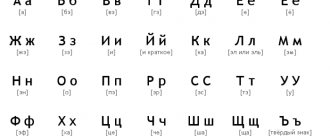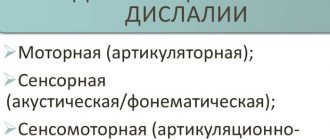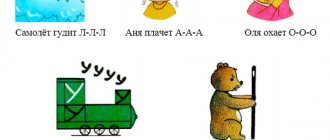Sound is the smallest indivisible unit of voiced speech flow that has no meaning. The branch of linguistics called phonetics is devoted to the study of the sound structure of a language, all its manifestations and functions.
The phonetic system of the Russian language contains 42 sounds, 6 of which are vowels, and the remaining 36 are consonants. Sonorant sounds in Russian deserve special attention. As a rule, the pronunciation of some of them causes the greatest difficulties in children who are just learning to speak. To understand what sonorant sounds are, it is necessary to consider the system of sounds of the Russian language as a whole.
Each sound has the following characteristics:
- acoustic;
- articulatory;
- functional (semantic).
Acoustic characteristic
To characterize a sound in terms of acoustics is to characterize the way it sounds. This can be done by its sonority, strength and height.
Sonority allows you to separate vocal and non-vocal sounds. All noisy consonants are nonvocalic. Vocal sounds include all vowels and sonorant consonants.
In terms of strength, sounds can be consonant or non-consonant. All consonants are consonant, i.e. weak, and non-consonant, i.e. strong - all vowels.
From the position of height, the sound can be high or low, respectively. High are the front vowels, front-lingual and middle-lingual consonants. All other vowels and consonants are low sounds.
Concept of articulation
Articulation is the process of producing sounds. The human speech apparatus, with the help of which sounds are formed, is represented by a fairly large set of organs. These include the lungs, larynx, vocal cords, nasal cavity, hard and soft palate, mandible, lips and tongue. The stream of exhaled air leaves the lungs and passes through the gap formed by the vocal cords in the larynx. When the vocal cords are tense and vibrating, a voice (tone) is formed. It serves as the basis for vowels, voiced and sonorant consonants. If the vocal cords are relaxed, the voice does not form, and noise occurs, which underlies noisy consonants.
Further differentiation of sounds occurs in the oral cavity, depending on what obstacle the air stream encounters on its path.
Difficulties in Russian
What about the sonants that cause the greatest difficulty in pronunciation for Russian-speaking people? The consonants [th], [m] and [n] do not cause any particular problems. But incorrect articulation of [l] and [r] occurs in almost every third child.
Note!
- The articulation of Russian [l] is different from the articulation of this sonant in other language systems.
- Russian [r], unlike English, is hard and has clearer articulation.
During the development of the speech apparatus, these phonemes are the most difficult for a child. If you do not seek help from a speech therapist at an early age and start a problem, it will be much more difficult to correct it in adulthood. As a rule, adults who have such a defect no longer undertake to correct it.
Characteristics of vowels
The main feature of vowel sounds is that when they are formed, a stream of air, having formed a tone in the vocal cords, no longer encounters any obstacles in the oral cavity. That is, they consist of only tone (voice) without added noise.
The vowels are the sounds a, o, u, i, ы, e. The articulation of each vowel sound depends only on the position of the active organs of speech (lips, tongue, soft palate and lower jaw).
The functional feature of vowel sounds is that they form a syllable, i.e. play a syllabic role.
Distinctive features
How to distinguish sonants:
- Sonorant phonemes or sonants contrast phonetically with aspirated consonants, which, when pronounced, create a turbulent flow in the vocal tract.
- Sonorant elements of speech are only voiced. This is because when these sounds are articulated, the noise is suppressed by the vocal tone and becomes virtually silent. This feature allows us to talk about the closeness of sonorant consonants and vowels. When articulating aspirated consonants, as well as fricative phonemes, on the contrary, the core of the sound is noise, not tone.
- That is why at the end of a word sonorant phonemes are never pronounced dully. The same pattern is observed when a sonant precedes a voiceless consonant. So, in the Russian word “company” it is pronounced voiced before a voiceless one. At the same time, noisy voiceless consonants in such a situation will be pronounced with voicing: mowing - . For the same reason, sonants do not have paired voiceless phonemes.
- Sonorant sounds, like other consonants, can form a syllable, which makes them simultaneously similar to consonants and vowels.
Characteristics of consonants
When a consonant sound is formed, the air stream encounters various kinds of obstacles on its path. When overcoming an obstacle, noise occurs. Therefore, the main difference between a consonant sound and a vowel is the presence, in addition to tone (voice), also of noise. The occurrence of a specific consonant sound depends on the location of the obstacle formation and the method of overcoming it. Thus, they are all divided depending on the ratio of tone and noise, place and method of formation.
According to the ratio of tone and noise, consonants are divided into sonorant sounds, voiced and voiceless consonants. Voiced and voiceless consonants are noisy because In their formation, noise participates either on an equal basis with the voice (voiced), or predominates over the voice (deaf).
When pronouncing a consonant sound, a barrier can be formed by the tongue or lips, therefore all consonants are divided according to the place of formation into labial and lingual.
According to the method of formation, or according to the method of overcoming an obstacle, they are occlusive, fricative, occlusive-frictional (affricates), occlusive-transitive and tremulous.
Another characteristic of consonants is palatalization (hardness/softness). Hardness/softness pairs do not have only a few consonant sounds: zh, ts (always hard) and ch, j (always soft).
Characteristics of sonorous sounds
What a sonorant sound is becomes clear from the translation of this definition. The word "sonorant" comes from the Latin sonorus. It means "resonant". Indeed, when such a sound is formed, the voice predominates, and the noise is so minimal that sonorant sounds become close to vowels. Sonorant sounds in Russian are m, m', n, n', l, l', r, r', j.
Note. The main thing that is special about sonorous sounds is that when passing through an obstacle in the oral cavity, the air that forms the sound finds a way around it. So, for example, when the sound l and its soft pair are formed, the air bypasses the bow formed by the tongue and upper teeth on the sides. Accordingly, according to the place of formation, this sound is lingual-dental. And according to the method of formation - occlusive-passage. When the sound p and its soft pair are formed, the flow of air causes the bow formed by the tongue and the hard palate to vibrate. Thus, it is lingual-alveolar according to the place of formation, and tremulous (vibrant) according to the method of formation. It is interesting that such a sonorant sound as j (th) is very similar in its formation to the vowel i. However, during its pronunciation, a significant narrowing occurs as the air flows through. Because of this, a slight noise arises, which allows us to classify this sound as a consonant. According to the place of formation, j is lingual-mid-palatal, according to the method of formation - fissural, and can only be palatalized (soft).
All sonorant sounds in the Russian language do not have a voiced/voiced pair and are only voiced. At the end of a word, deafening of sonorant sounds does not occur, as happens with other voiced consonants.
What does the word... mean?
Life is changing rapidly. Integration with other cultures, information interaction, exchange of culinary traditions and general evolution are reflected in the vocabulary of the Russian language. Vocabulary and language style change in accordance with the spirit of the times. The vocabulary is regularly updated with new definitions. Sometimes, in order to stay on topic, you have to look up what a word means or the meaning of expressions. Explanatory dictionaries will help you with this, since changes in vocabulary are immediately reflected in them.
Dictionary online
More recently, to find out what a foreign term or unknown expression means, people went to reading rooms. This period was experienced by your parents’ generation. Yes, yes, libraries were unified centers and sources of reference information. Wealthier families bought dictionary encyclopedias in printed form. Many volumes occupied entire mezzanines, and yet did not contain all the abundance of information on many specific topics. With the development of technology, the advent of the Internet and electronic media, access to bodies of knowledge has become easier and more immediate. In our online dictionary you will find an interpretation of the meaning and origin in 2-3 seconds.
Why are sensible thesauri needed and why do they remain relevant? Most people would rather avoid something funny than make excuses. In the age of popularization of social networks, information spreads instantly, and being considered ignorant is, you see, an unenviable prospect. The Russian explanatory dictionary online on the how-to-all website is a resource for supporting competence in any matter. Look here so as not to lose face. He will explain the semantics, what meaning the word has in the specified context, its history.
Oral and nasal sonorities
Depending on the position of the velum, different consonant sounds are formed. If the velum is lifted and pressed against the back wall of the pharynx, the passage into the nasal cavity for the air stream is closed. The sounds produced in this way are called oral sounds. Or clean. If the velum is lowered, the passage into the nasal cavity for the air stream opens, and the nasal cavity serves as an additional resonator for the formation of sound. In this way, sounds called nasal or nasal are formed.
There are only four nasal sounds in the Russian language: m, m', n, n'. According to the place of formation, the m and its soft pair are labial-labial, and according to the method of formation, it is occipital. The sound n and its soft pair are lingual-dental according to the place of formation, and octocental according to the method of formation.
So, understanding what a sonorous sound is is possible only with a full understanding of the mechanism of sound formation. That is, their articulation. Knowledge of the features of sonorant consonant sounds helps to determine their place in the phonetic system of the Russian language.










